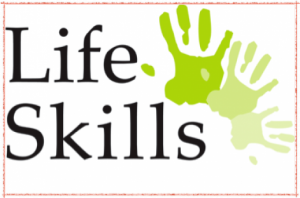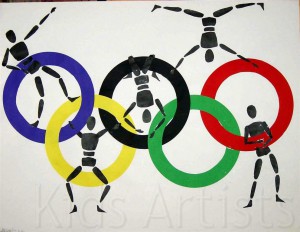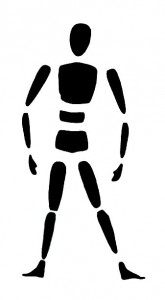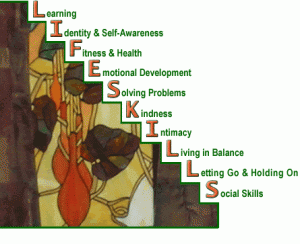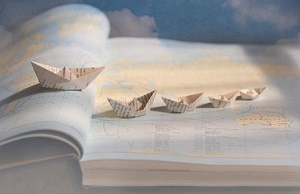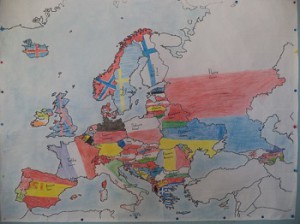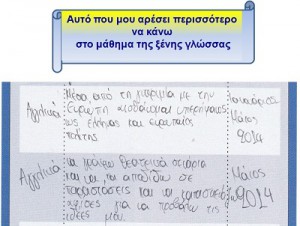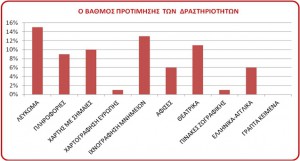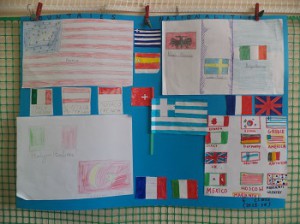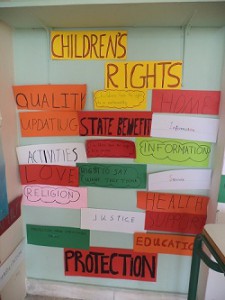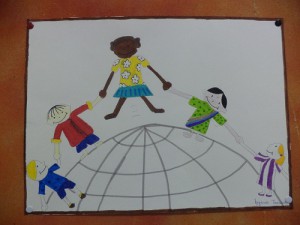Άρθρα κατηγορίας Personal Portfolio
Swimming with Cara
A. Students and Setting: The activity is designed for A’ or B’ graders of primary school with very little prior knowledge of English, especially in the written form. They may know some words of the target vocabulary and have developed some skills on gaming.
B. Lesson Background: In an EAEP state school, A and B graders are taught English two times a week for about 45 min. each time which is a very limited time span to fully complete a task that includes other aspects that just vocabulary or structures. It will probably need 5-6 teaching hours to be completed.
C. Learning Objectives/Expected Results: The lesson is aiming at expanding the PEAP material on animals for both grades but it can be easily integrated into the curriculum for 4th graders because it is about the Caretta-Caretta turtle (Unit 6: Animals, Lesson 2: A visit to the Sea Turtle Rescue Centre, p.p 74-77). 4th graders may have some experience on ecological issues such as the danger of extinction of specific animals.
Cognitive: Ss identify and select the appropriate colour and animal vocabulary to respond to the quizzes and they employ their prior technological literacy to play and handle the software.
Affective: They develop an ecological attitude towards animals and the environment through play and song, they judge and criticise behaviours and attitudes towards the environment and evaluate their performance.
Psychomotor: They experiment with the software and web 2.0 tools, select roles to play and interact and finally create their digital storytelling.
D. Materials and Sources: Flashcards, a flash animated digital game, a powerpoint presentation or a Youtube fairy-tale in Greek «Πού πας χελωνάκι;» (http://youtu.be/boJ3mEy2KnM), an educational song recorded on Youtube (http://youtu.be/WXe7Rx3w9ro) from http://www.thewhizpops.com/ (a website especially designed for the teaching of natural sciences).
_Καρέτα (ppt presentation)
E. Procedures / Timing:
| Teacher does/says . . . | Students do/say . . . | Approximate Time |
| T shows the ppt presentation or the visualized Greek fairy- tale «Πού πας χελωνάκι;» to make sure that Ss understand the context and the situation. | Ss respond to the message and express their opinions. | 1 teaching session |
| The teacher shows some flashcards on colours and animal vocabulary so that students can distinguish and use the new vocabulary. T introduces the song on sea turtles and explains it. | Ss repeat and respond to the material and dance and sing to the rhythm of the song. | 20 min. |
| Ss are taken into the computer lab, are divided into small groups and briefly instructed on how to use the software. | Ss use and interact with the software. | |
| T asks Ss to draw pictures and depict what they have learnt and understood about these sea animals. | Ss draw pictures about the sea creatures, life in the sea and particularly on the life and dangers of the sea turtle. | 20 min. |
| T asks Ss to evaluate their performance and judge the activity. T also asks them to imagine sea and animal sounds and assigns roles for a short theatrical play. | Ss evaluate their performance in the Biography section of their portfolios, insert their creations in the Dossier section and create a short play with sea or animal sounds and short phrases to play in the classroom. | 1 teaching session |
| T scans the pictures and uploads the audio files with the recordings of pupils to create their digital story- telling using the http://utellstory.com/ (web 2.0 tool). T finally proceeds to the Reflective Thinking on the digital diary http://penzu.com/. |
F. Alternative Assessment: An easy assessment is through the points and correct answers in the digital game but a more educational alternative assessment is by using Ss’ portfolios as described above.
G. Reflection: The specific activity is as demanding for the teacher as for the students because it employs various literacies and competences. Apart from its cognitive aspects, the technological literacy and the ecological education that aspires to cultivate are difficult to develop in the state schools as they are equipped and operate nowadays because they lack the digital infrastructure or the options to visit aquariums and attempt experiential activities.
Nevertheless, this activity is an attempt to overcome the obstacles and support learning in an amusing and educational context.
Πρόγραμμα “Life Skills”
Διαπιστώνοντας την ανάγκη για την ολόπλευρη ανάπτυξη της προσωπικότητας των μαθητών τόσο στο γνωστικό όσο και στον κοινωνικο-συναισθηματικό τομέα, το σχολείο μας φιλοξένησε κατά το σχολικό έτος 2014-15, το πρόγραμμα του Βρετανικού Συμβουλίου “Life Skills” (Δεξιότητες Ζωής) με έγκριση του ΥΠΑΙΘ και του Ινστιτούτου Εκπαιδευτικής Πολιτικής.
Το πρόγραμμα ολοκληρώθηκε σε 6 διαδραστικά εργαστήρια για μαθητές 10-16 ετών, τα οποία υλοποιήθηκαν από εκπαιδευτή του British council και στόχευαν στο να βοηθήσουν τους μαθητές να ανταποκρίνονται σε καθημερινά ζητήματα και προβλήματα της ζωής.
Στις Δεξιότητες Zωής περιλαμβάνονται η δημιουργικότητα, η κριτική σκέψη, η ικανότητα επίλυσης προβλημάτων και λήψης αποφάσεων, η επικοινωνία και η συνεργασία, η ιδιότητα του πολίτη, η σχέση της καθημερινότητας με την καριέρα, η προσωπική και η κοινωνική υπευθυνότητα που αποτελούν απαραίτητα χαρακτηριστικά για την επιτυχία στον 21ο αιώνα, χρήσιμα τόσο για υγιείς κοινωνίες όσο και για υγιείς ανθρώπους. Στιγμιότυπα από τα εργαστήρια μπορείτε να παρακολουθήσετε παρακάτω:
Panhellenic Day of School Athletics
The first Monday of October every year is established as a Panhellenic Day of School Athletics, according to the Ministry of Education. The celebration is integrated into the wider context of the so called “Social School”. What can we, as teachers of English, do? Following are some suggestions for activities that correspond to the concept and message of the day, which is Racism and Diversity (for this year), Tolerance, Bullying and Violence, Sports and Olympic Games.
Starting with a craft, students can first be divided into groups. Each group can make the Olympic rings according to the pattern using coloured cardboard or glossy paper and then decorate them with the figure of an athlete in several postures as shown in the picture. The students can name as many sports as they can and then talk about the colours of the olympic rings and the message of the olympic truce.
“Full sail for the Future”
Life Skills is a term that describes skills that help us manage everyday situations and problems. We are not born with them, we have to be taught and trained in order to acquire them. Creativity, critical thinking, problem solving and decision making skills, communication and cooperation, active citizenship, personal and social responsibility are essentail components for the demands of the 21st century society and the success in our lives. In 2006, the European Union (EU) established the European Framework of Key Competences to ensure that these key competences are fully integrated into the partner countries’ curricula, strategies and infrastructures, particularly in the context of lifelong learning.
The eight Key Competences are:
- communication in the mother tongue
- communication in foreign languages
- mathematical competence and basic competences in science and technology
- digital competence
- learning to learn
- social and civic competences
- sense of initiative and entrepreneurship
- cultural awareness and expression
The Key Competences can’t be promoted and developed without the support and interaction of the Soft Skills or Life Skills that are equally important. What is commonly said is that Key Competences and degrees will lead you to a job interview but to get and keep the job you’ll surely need Soft or Life Skills.
The following activity occured to me after a seminar on Life Skills in the British Council. I distinguished that in particular because I thought it was quite interesting and I could adapt the content to fit an English class of primary students, although I haven’t had the time to do it yet. It could also be integrated into an eTwinning project as an activity.
LEARNING (ETWINNING) ACTIVITY
TITLE: “FULL SAIL FOR THE FUTURE”
GRADE LEVEL: 10-12
AIM: Development of creativity, critical thinking, problem solving and decision making skills, practice on active citizenship, cultivation of dialogue, personal and social responsibility and argumentation for or against other people’s decisions.
COGNITIVE AREAS INVOLVED: English Language, ICT, Art, Citizenship (teaching of principles and attitudes) and interdisciplinary concepts of the Greek education curriculum (peace, cooperation, friendship, etc).
WEB 2.0 TOOLS:
1) www.padlet.com for the presentation and introduction of pupils.
2) www.drawitlive.com for the creation of a common project logo (probably concerning travel or ship).
3) www.polldaddy.com for the selection of votes and preferences in the logo competition.
4) www.kizoa.com for the presentation and illustration of equipment and necessary supplies for the trip (cards of objects, ideas, values).
5) www.tricider.com to argue for or against some supplies for survival and life.
6) www.issuu.com / www.youblisher.com for the publication of the story or the fairytale that will describe and illustrate the adventure.
7) www.answergarden.com for the evaluation of the activity.
8) www.wordle.com for the creation of a word cloud with the pupils’ comments and impressions.
9) www.penzu.com a digital diary of the project for the evaluation of the whole activity and the learning results (Reflective Thinking).
ACTIVITY PROCESS:
1st STEP: Each student presents him/herself and their personal mottos for life on a common digital dashboard.
2nd STEP: The students work in mixed ability (and transnational) groups on drawitlive. There can be a logo competition for the activity or the whole project. The votes can be selected with digital polls.
3rd STEP: How do you dream of your future trip? The students draw and colour all the necessary supplies and equipment for the trip (including values, ideas and attitudes) in groups. They can make cards (of justice, friendship, modern clothes, etc). They present all of them on a digital slideshow tool. They can also stick them on a dashboard in the classroom.
4th STEP: The groups argue for and against the things that should be abandoned if they want to save their lives and arrive safely at a place using a public discussion tool. They have to decide on the most important things for life and which of them will be kept in every phase of their journey to the future.
5th STEP: Their adventure is described and illustrated by the students and published as a travelling album with the support of a publishing tool.
6th STEP: The students self-assess their performances and evaluate the activity. Their comments and impressions are depicted on an opinion selection tool and then are presented as a word cloud with the support of the appropriate web tool.
7th STEP: The teachers evaluate the whole activity and the learning outcomes in a digital diary especially engaged for the so called Reflective Thinking.
EXPECTED LEARNING OUTCOMES:
- The students will use the English language as a communication tool and they will develop linguistic skills.
- They will use debate techniques to express their opinions, to argue and convince their interlocutors.
- They will consider and evaluate ideas and opinions they agree or disagree with, respecting all of them.
- They will learn to work in groups and collaborate with other students.
- They will learn how to learn and develop initiatives.
- They will identify their position and role in the greek and wider European ‘scene’.
- They will spot similarities and differences in the culture and mentality of partner countries.
- They will communicate and create friendships on a European level.
- They will use Technology creatively developing digital competence.
(images retrieved from www.google.gr)
“Viewing Europe through my two windows”: employing CLIL teaching methodology
CLIL (Content and Language Integrated Learning) enables the integration of a subject and a foreign language and is a creative and innovative way of learning languages. It follows European language policies on the promotion and implementation of multilingualism. The CLIL methodology is designed to improve the teaching of language and communication skills, focusing on academic knowledge and skills of investigation, communication and cooperation for the student.
Within this framework, Europe was chosen as a theme in its two dimensions: cultural monuments and natural environment with its problems. The methodology used was based on project-based learning and the application of the CLIL method (combination of a subject unit with the English language) whereas a wiki page was used to support the products of the project.
The students worked in teams and …
- “travelled” through Europe using the internet and visited various cultural and natural monuments of the 48 countries. See here their electronic album.
- painted posters to raise awareness on environmental problems in Europe.
- wrote scenarios about these environmental problems, shared roles and presented their short theatrical plays to the students and teachers of our school on June 5 (World Environment Day).
- painted a political and a geophysical map of Europe each.
- completed a large map of Europe, painting each country with the colours of its flag and wrote the names of the countries in the two languages (Greek and English).
- analysed two paintings, one on the culture of Europe and one on the environment with the Perkins method of visible thinking.
- finally, self-assessed their progress (using questionnaires, their language portfolios and web 2.0 tools) and commented positively on the products of their work.
The teachers involved in this project were Matoula Vlahou, Catherine Georgopoulou and Maria Mathioudaki.
“Euro Travel Guide” ή “Ευρωταξιδιωτικός Οδηγός”
Πρόκειται για ένα Σχέδιο Εργασίας τύπου project που υλοποιήθηκε από τους μαθητές της Ε΄Τάξης κατά το σχολικό έτος 2013-14. Στόχευε σε μια πιο κριτική και δημιουργική προσέγγιση της γνώσης που πηγάζει από την εμπειρία που αποκτά ο μαθητής μέσα από τη συμμετοχή του σε μια νοηματοδοτημένη εκπαιδευτική διαδικασία.
Η υλοποίησή του περιλάμβανε την κατασκευή ενός πολιτικού-πολιτισμικού χάρτη της Ευρώπης και τη δημιουργία ενός ψηφιακού ταξιδιωτικού οδηγού με σκοπό την άμβλυνση των πολιτισμικών προκαταλήψεων και την υιοθέτηση προσωπικών θέσεων, αξιών και συμπεριφορών που διαμορφώνουν την ταυτότητα του ενεργού Ευρωπαίου πολίτη.
Το project προέκυψε με αφορμή την ενότητα 1 (Unit 1 – “Internet Friends around Europe”) του βιβλίου των Αγγλικών της Ε΄τάξης. Οι διαθεματικές του προεκτάσεις αφορούν στα γνωστικά αντικείμενα της Ελληνικής γλώσσας, της Γεωγραφίας, της Αγωγής του Πολίτη, της χρήσης ΤΠΕ και των Εικαστικών.
Τα στάδια υλοποίησης ήταν τρία: Αρχικά κατασκευάστηκε ένας εκπαιδευτικός ιστοχώρος (wiki) για να υποστηρίξει το έργο (http://etg20.wikispaces.com/) που παραχωρήθηκε δωρεάν από την εταιρεία wikispaces.com καθώς και ψηφιακά εκπαιδευτικά παιχνίδια με το εργαλείο www.quizlet.com. Σε δεύτερο στάδιο αναζητήθηκε από τους μαθητές πληροφοριακό υλικό από το Διαδίκτυο για την παρουσίαση και ανάδειξη των ιδιαίτερων στοιχείων κάθε χώρας. Στη συνέχεια κάθε μαθητής παρουσίαζε τη συγκεκριμένη χώρα στην ολομέλεια της τάξης στην Αγγλική γλώσσα. Ταυτόχρονα γινόταν η ηχογράφηση της παρουσίασής του και η ανάρτησή της στο wiki του έργου με τη χρήση του διαδικτυακού εργαλείου www.voki.com που παρέχει avatars για την ασφάλεια των παιδιών. Αναρτήθηκε επίσης ένας καμβάς με links από διαδικτυακούς τόπους με ενημερωτικό υλικό και παιχνίδια για την Ευρώπη. Τέλος, κατασκευάστηκε ένας πολιτισμικός χάρτης όπου κάθε μαθητής πρόσθετε εικόνες με τη σημαία της χώρας που είχε αναλάβει και ενός ιδιαίτερου μνημείου ή αξιοθέατου της.
Η αξιολόγηση (Evaluation) των μαθητών βασίστηκε στο διαδικτυακό εργαλείο AnswerGarden.ch και τα σχόλιά τους δημιούργησαν το παρακάτω σύννεφο λέξεων.
“Τα Παιδιά Γράφουν & Ζωγραφίζουν τα Δικαιώματά τους”
Το Πανελλήνιο Εκπαιδευτικό Πρόγραμμα της UNICEF σε συνεργασία με το ΥΠΑΙΘ, αναγνωρισμένο από την Επιτροπή των Δικαιωμάτων του Παιδιού που εδρεύει στη Γενεύη θεωρήθηκε το καλύτερο στη χώρα μας για την προώθηση των Δικαιωμάτων του Παιδιού και υλοποιήθηκε το έτος 2013 με την Ε΄τάξη του σχολείου μας.
Σκοπός του προγράμματος “Draw and Write your Right” ήταν η ενημέρωση και ευαισθητοποίηση των μαθητών μέσα από τη βιωματική-εμπειρική μάθηση. Η προώθηση αξιών, όπως η κοινωνική δικαιοσύνη, ο αλτρουισμός, η ειρήνη, η ισότητα, αποτέλεσε βασική προτεραιότητα του προγράμματος που βασίστηκε στην ομαδική συμμετοχή και τη συλλογική έκφραση των μαθητών. Η συνεργασία και η καλλιέργεια αμοιβαίου σεβασμού και αλληλεγγύης στη σχολική τάξη στόχευε στην υιοθέτηση θετικών συμπεριφορών και στάσεων ζωής.
Αφορμή στάθηκε προηγουμένως ο εντοπισμός και η καταγραφή φαινομένων ‘bullying’ στο σχολείο μας που επικεντρώνονταν στο πρόσωπο μαθήτριας η οποία ήταν ξενικής καταγωγής και η οποία είχε ‘εκδιωχθεί’ από το προηγούμενο σχολείο της για τους ίδιους λόγους.
Οι δραστηριότητες που επιλέχθηκαν ήταν η προβολή σχετικού DVD, παιχνίδια ρόλων (για ανταλλαγή απόψεων, καλλιέργεια κριτικής σκέψης και κυρίως ενσυναίσθησης), δημιουργία αφίσας με συνθήματα των παιδιών στην αγγλική γλώσσα, κατασκευή ζωγραφικών έργων και τέλος εφημερίδα που δημοσιεύτηκε και σε ηλεκτρονική μορφή (Πατήστε εδώ για την εφημερίδα). Το περιεχόμενο της εφημερίδας βασίστηκε σε βιωματικές εμπειρίες των μαθητών, σε παρουσίαση της γέννησης της Unicef μέσα από ένα παραμύθι και σε συζήτηση και παρουσίαση της ζωής του Martin Luther King βασισμένη στο interactive quiz book που μπορείτε να δείτε εδώ.
Δείγματα των δραστηριοτήτων μπορείτε να δείτε εδώ!

